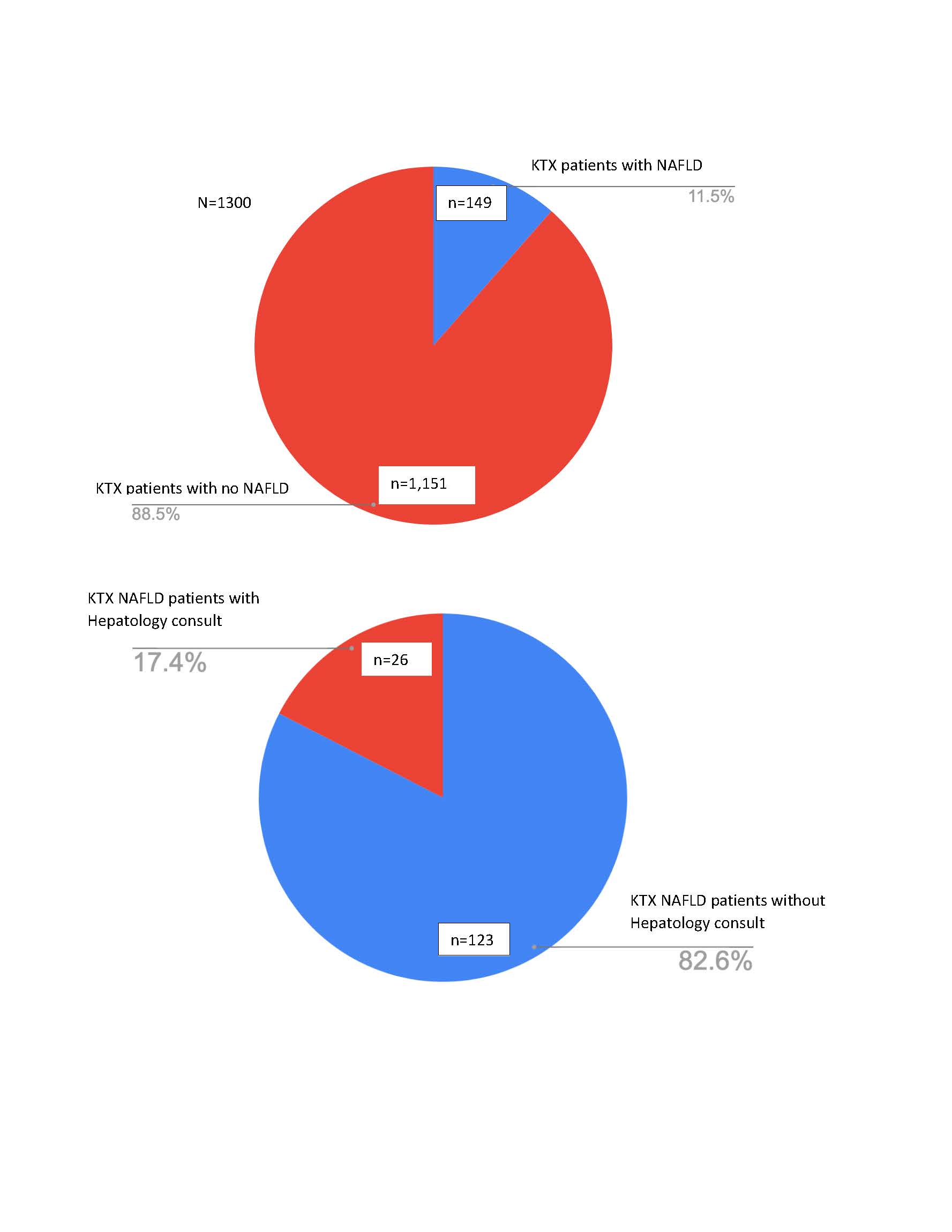Non-Alcoholic Fatty Liver Disease in Non-Liver Transplant Patients
1Morsani College of Medicine, University of South Florida, Tampa, FL, 2Honors College, University of South Florida, Tampa, FL, 3Transplant Surgery, Tampa General Hospital, Tampa, FL, 4Transplant Hepatology, Tampa General Hospital, Tampa, FL
Meeting: 2021 American Transplant Congress
Abstract number: 1081
Keywords: Adverse effects, Kidney transplantation, Liver transplantation, Screening
Topic: Clinical Science » Liver » Liver: Kidney Issues in Liver Transplantation
Session Information
Session Name: Liver: Kidney Issues in Liver Transplantation
Session Type: Poster Abstract
Session Date & Time: None. Available on demand.
Location: Virtual
*Purpose: The global prevalence of non-alcoholic fatty liver disease (NAFLD) is rising at an alarming rate, driven in large part by an increased incidence of diabetes and obesity. NAFLD is currently the number one cause for liver transplantation in the U.S. It has also been shown to have effects on patients undergoing transplants for other organs such as kidneys and pancreas. The purpose of our study was to evaluate the prevalence of fatty liver in non-liver transplant patients, looking particularly at kidney transplants.
*Methods: We conducted a single-center retrospective cohort study of patients undergoing kidney transplants from January 2015 to December 2019. Patient data were obtained from the United Network for Organ Sharing (UNOS) as well as our hospital’s electronic medical record system. Patient records were reviewed at the time of transplant to one year after transplant. Patients under 18 years of age at the time of transplant were excluded from our study. The presence of fatty liver was determined via radiological imaging. Our primary endpoint was the prevalence of NAFLD outside of known end-stage liver disease in kidney transplant patients.
*Results: Of the 1300 kidney transplant patients, 149 (11.5%) were found to have a fatty liver noted before or after their initial kidney transplant. Abdominal ultrasound was the primary imaging technique utilized for diagnosis. The mean age of patients was 53 years for NAFLD and 51 years for non-NAFLD patients. Of the 149 patients with a fatty liver, 30 (20.1%) underwent a living donor transplant, 144 (96.6%) had diabetes and only 17.4% of NAFLD patients received a hepatology consult.
*Conclusions: This study emphasized the need to diagnose and understand post-transplant outcomes for NAFLD patients in the kidney transplant population as well as increase efforts to ensure patients with fatty liver receive consultations from specialists/hepatologists. With NAFLD currently being the number one indication for liver transplants, undiagnosed NAFLD patients are at risk of developing health complications if left untreated and may require a liver transplant.
To cite this abstract in AMA style:
Claudio R, Conceicao C, Robichaux K, Kumar A, Buggs J, Kemmer N. Non-Alcoholic Fatty Liver Disease in Non-Liver Transplant Patients [abstract]. Am J Transplant. 2021; 21 (suppl 3). https://atcmeetingabstracts.com/abstract/non-alcoholic-fatty-liver-disease-in-non-liver-transplant-patients/. Accessed December 25, 2025.« Back to 2021 American Transplant Congress

